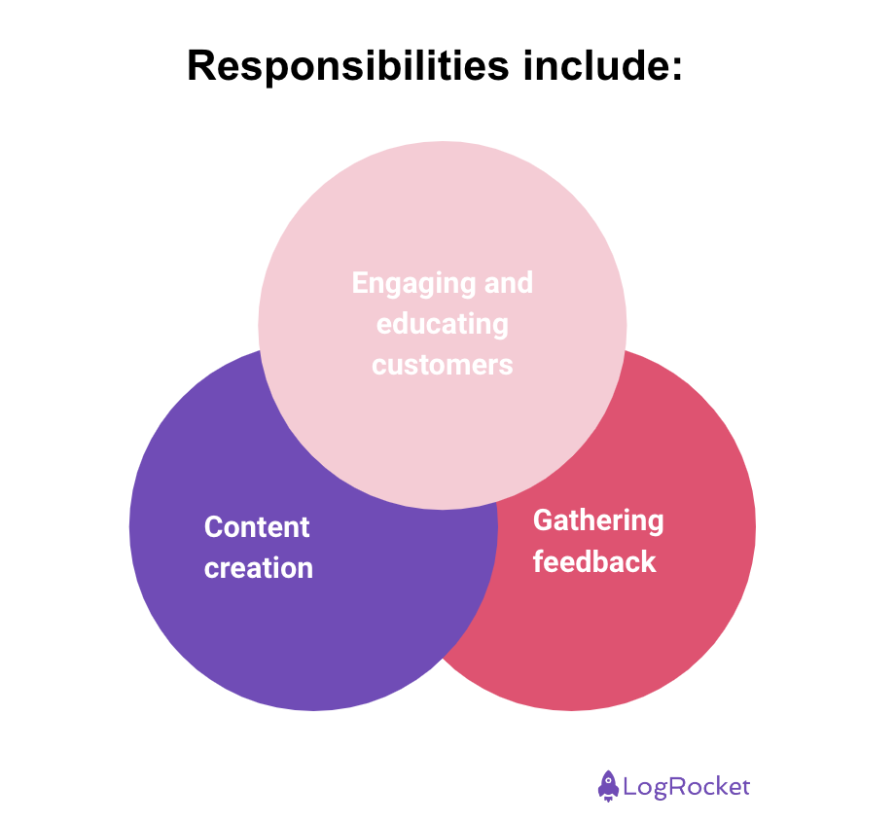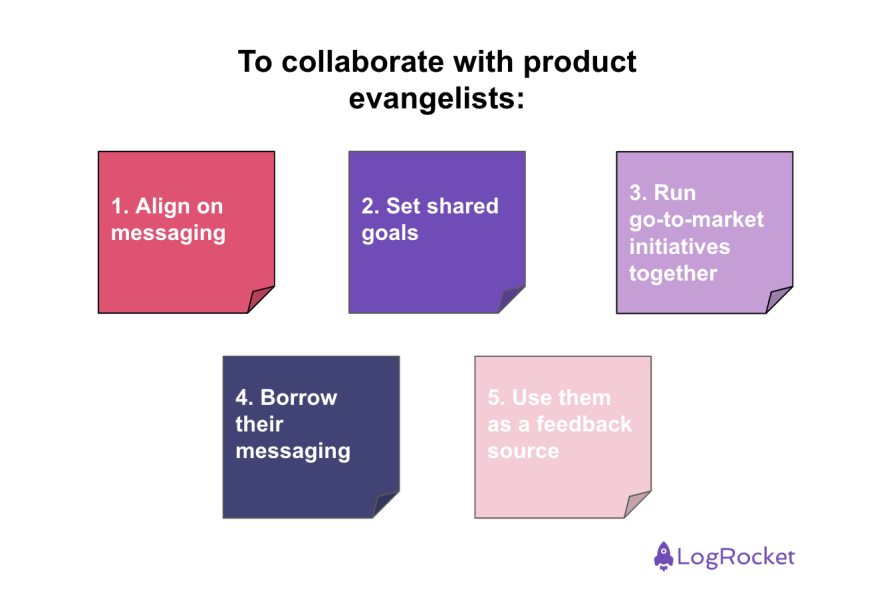Building a community of product evangelists is an under appreciated method that drives growth, retention, and user satisfaction.

With customer acquisition costs growing like crazy and younger generations spending a lot of time on social media, product evangelists can be a great addition to a company’s strategy.
Not to mention, they’re great partners in crime for you as a product manager.
Keep reading to learn what a product evangelist is, the benefits of having one, and how you can become one.
A product evangelist is a person who advocates and promotes a specific product or brand.
In some cases, they even become a critical element of growth strategy.
Famous examples of product evangelists include Elon Musk with his constant evangelization of electric cars and Steve Jobs in the early days of Apple.
Product evangelists usually focus on three key activities:

A product evangelist educates the broader audience on what the product is about and how to get the most out of it.
They also engage with existing customers to help them solve problems, answer complaints, and perform small, unrelated tasks. These actions make them the human face of the product.
Although there are many ways to educate and engage customers, content creation has become the main channel in recent years.
From posting on Instagram to creating YouTube videos to writing fully-fledged articles, they reach out to people by putting themselves out in the digital world.
The stronger the relationship the evangelist has with the audience, the higher the chance that people will come to them with truly genuine feedback. This helps shape the product later on.
A great product evangelist:
Given the need to truly understand the product and be able to help people, product evangelists usually come from within the company — think founders, marketers, and product managers.
Product evangelism is time-consuming and takes a lot of tries to get right. So why bother? The biggest benefits include:
Product evangelists that go viral can bring more new customers than paid marketing does.
Some products rely almost exclusively on product evangelism.
For example, a New York Times bestseller book, “Feel Good Productivity,” gained popularity almost exclusively thanks to active promotion by Ali Abdaal — the author of the book.
People resonate with other people more than with companies.
If five products are doing exactly the same thing, but only one has a group of friendly people actively talking about the product and interacting with the audience, which one do you think most people will choose?
Connections are a strong stickiness mechanism.
One of the reasons why people don’t move from Tesla to cheaper electric cars is their fascination with Elon Musk himself.
Many people stay with the brand because they support Elon, not the brand itself.
The same principles apply to less viral product evangelists.
Surveys and user interviews are a decent source of feedback, but they create an artificial environment.
It’s hard to be genuine and transparent with someone you met ten minutes ago.
The story is different with product evangelists.
Even if you haven’t talked with one in person, if you follow a particular evangelist for a long time, you begin to associate them as someone “you know personally.”
That leads to more honest feedback.
LEGO knows that, and they go as far as to engage with their community to co-create new lego sets.
Apart from founders and C-level themselves, you’re the best person to become a product evangelist.
You already know the product inside-out and have a solid understanding of your users, their desires, and their pain points.
To get started as an evangelist, try these three strategies:
Whether it’s a long-form blog post, short-form tweet, video, or short, it doesn’t matter.
Just create content at scale.
It’ll help you get the message across and, most importantly, allow people to find you.
Discussions happen on social media, so be there.
Depending on where your audience spends most of the time, it can be LinkedIn, X, or even TikTok.
Create your content, comment on content about your product, and engage with your target audience.
Just don’t forget about the human aspect. If you talk only about how fantastic your product is, you won’t sound authentic.
Wherever your audience is, be there too.
It can range from on-site conferences to forums, subreddits, and Discord channels.
Once you establish yourself in the community, become an active member.
Start organizing product-related webinars, virtual hangouts, or coffee hours at Discord.
If you get high engagement, consider moving this audience to a new, product-focused subcommunity.
If done right, people in this community will be your most loyal and active customers.
If your company has evangelists other than you, here are a few ways to collaborate with them:

Ensure the message that goes out aligns with the current state and your long-term plans.
Product evangelists can slowly and subconsciously prepare your user base for upcoming changes.
Product evangelists can help you reach your product goals faster.
For example, if you just launched a feature X and want to boost its discoverability, align with your product evangelists on that objective.
The more they know what’s needed, the more impact they can make by sending the right message across.
If you have a new big feature or product release coming, make sure your evangelists know about it.
They can build up the hype before the release and make some noise during the launch, which helps a ton in the first days.
And if something goes wrong, they’ll be on the front line reassuring people that everything is under control and fixes are on the way.
Understand what type of content from evangelists goes viral.
If something goes viral, it means it resonates with the target group.
Try using a similar tone of voice in the product itself.
Lastly, ask them for feedback often.
Whenever discussing new ideas, ask them what they believe would work be
They often have insights that you might miss.
Imagine that people from all around the world start talking about your product and championing it.
They highlight all the benefits of the product, create their own tutorials, and build dedicated communities around your product.
Without even being asked to.
It’s possible. Notion is a perfect example.
There are thousands of Notion-focused influencers on all platforms.
The key?
Make product evangelism organically monetizable.
If people can earn money by advocating your product, many of them will.
Notion makes it possible thanks to templates. By evangelizing Notion, evangelists get a big following, and then they can sell templates to them.
If you can create a way for third-party influencers to earn serious money off your product without engaging with you directly, you have a high chance of becoming viral.
Some mechanics that help this virality include
Product evangelism can be a great way to differentiate in the crowded market and drive product success.
Evangelists:
There are hardly better candidates for the role than product managers. After all, you already have deep product knowledge, understand your target audience, and know exactly what the product needs at a given moment.
From creating content to being active on social media to building a whole community, there are many activities you can do to foster product evangelism out there.
And if you’re not an evangelist yourself, make sure to collaborate closely with them — you often can benefit greatly from their work.
Featured image source: IconScout

LogRocket identifies friction points in the user experience so you can make informed decisions about product and design changes that must happen to hit your goals.
With LogRocket, you can understand the scope of the issues affecting your product and prioritize the changes that need to be made. LogRocket simplifies workflows by allowing Engineering, Product, UX, and Design teams to work from the same data as you, eliminating any confusion about what needs to be done.
Get your teams on the same page — try LogRocket today.

Most teams fail at autonomy. Learn how clear rules help product teams move faster without micromanagement.

A practical framework for PMs to use AI in ideation without sacrificing judgment, strategy, or decision quality.

A practical five minute revenue estimation method to help product managers compare ideas, drop low impact features, and prioritize smarter.

A practical guide for PMs who want to stop being bottlenecks, delegate smarter, and lead teams effectively with a clear ownership framework.